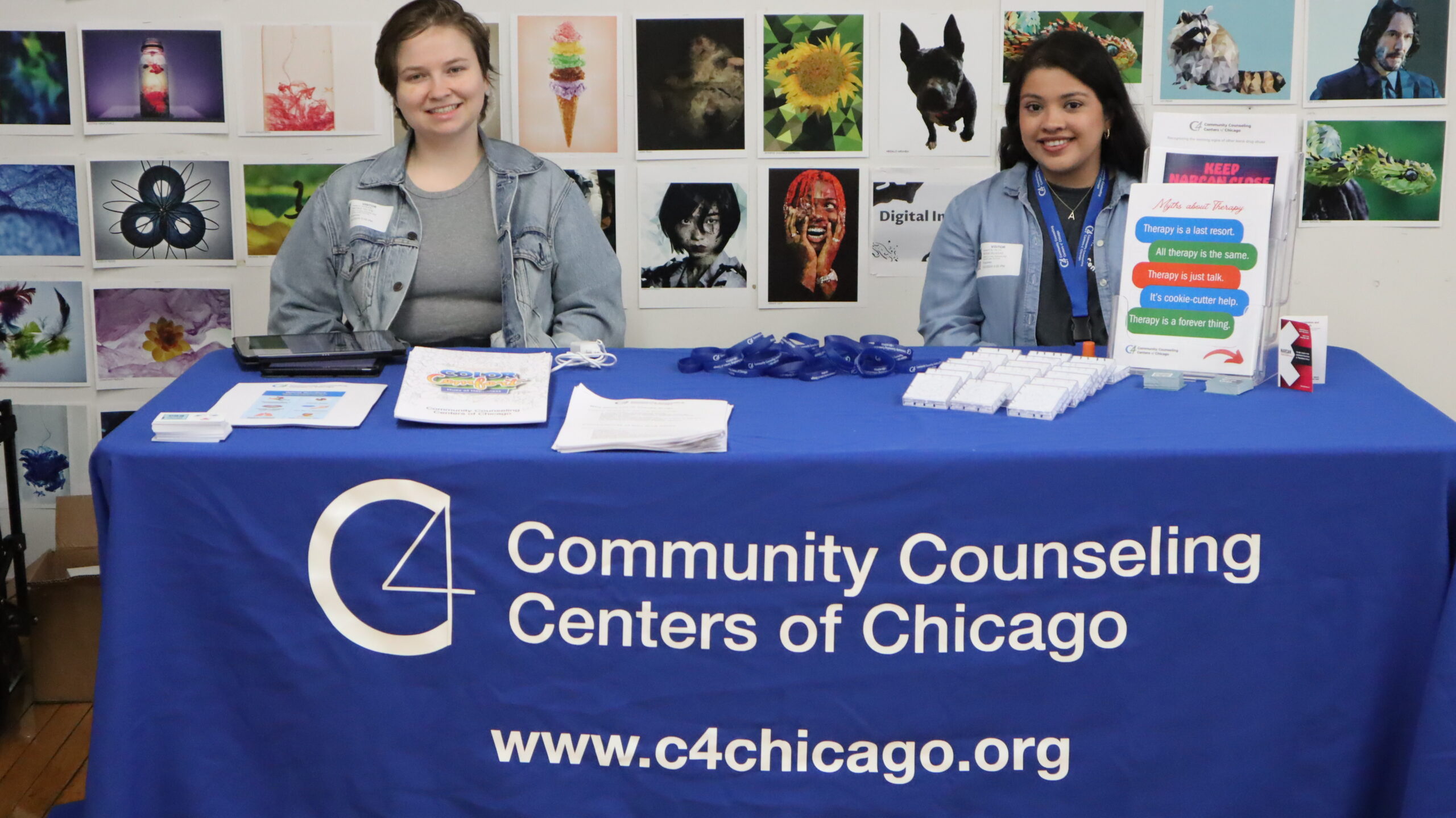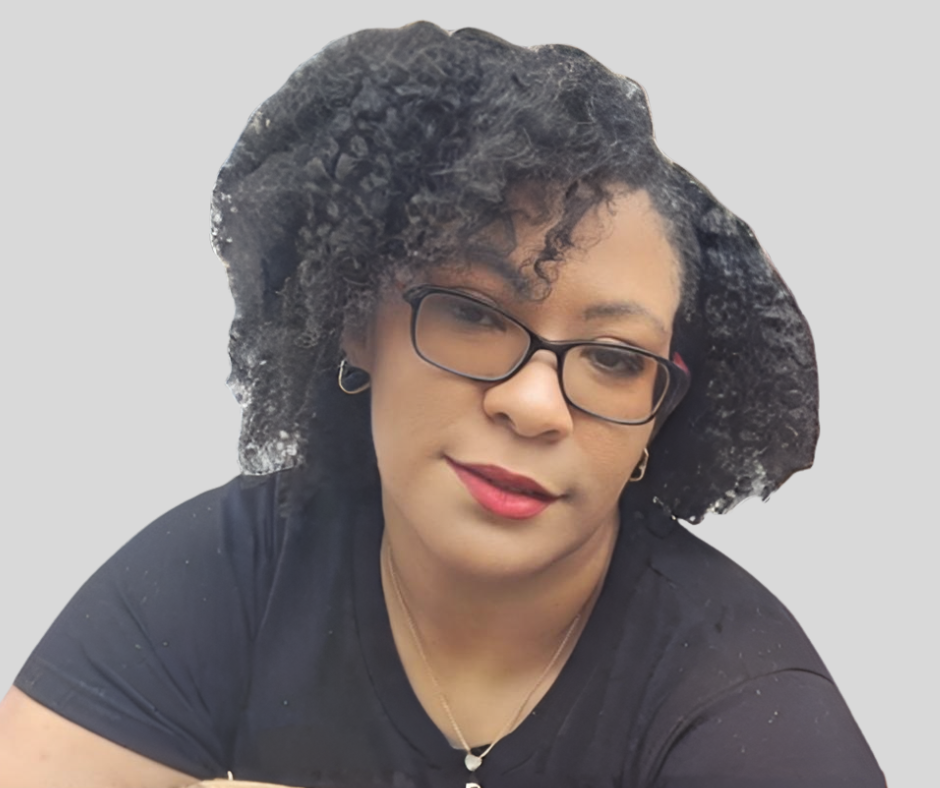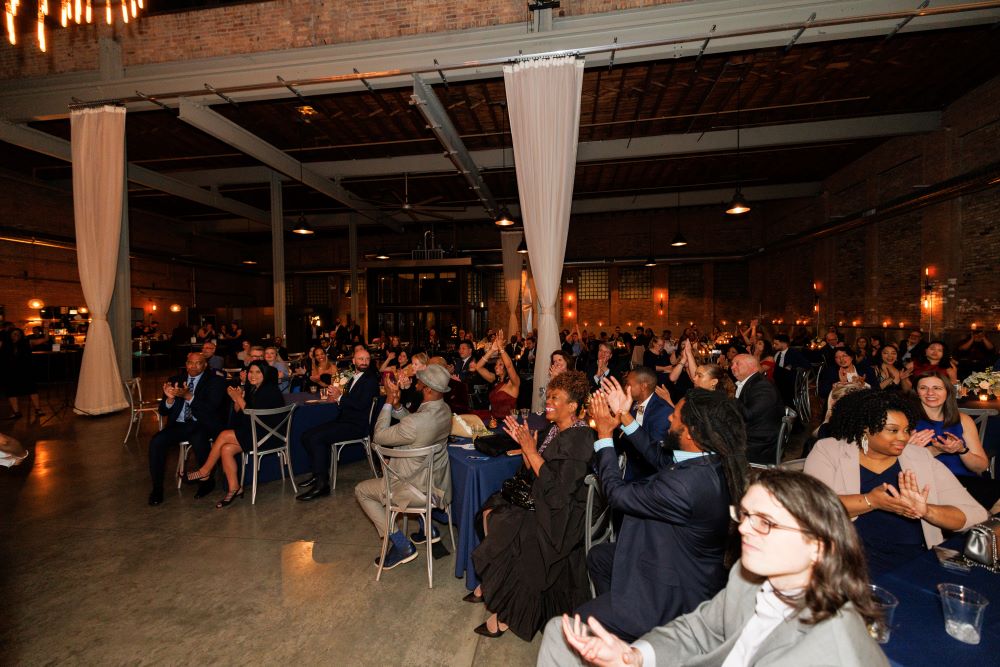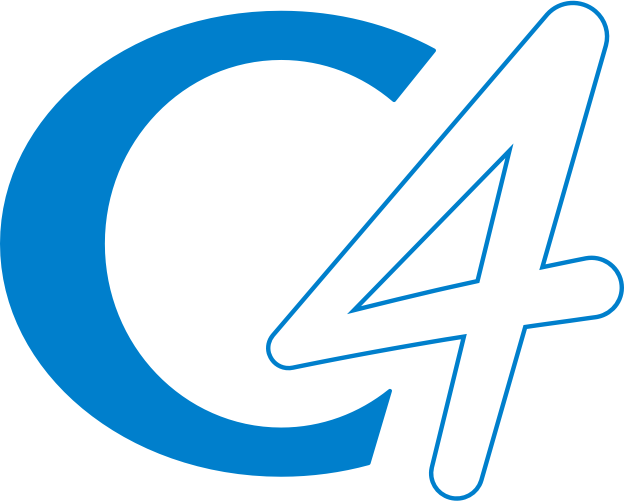Blog
Employee Spotlight: Estrellita Sosa
We sat down with Estrellita Sosa, a supervisor for C4’s new Substance Use & Recovery program, to discuss her return to SUR work, her clinical philosophy, and plans for the curriculum. Sosa lived in New York until graduate school and earned her master’s in clinical mental health counseling at Adler University. She loves music and lives with her cat.
C4: Let’s just start out by telling us a little bit about yourself. Where you’re from, where you went to school, what your life is like outside work.
Estrellita Sosa: I was born and raised in New York City, in the Washington Heights area. My parents are Mexican and immigrated to New York in 1983, and they’ve lived in the same apartment since then, although my mom recently passed away. And I’m a lot of her. I have a very community-focused purpose in my life. My family was a big part of me, and our neighborhood was a big part of us. I’ve always been a kind of a “how much can I give to others” person, I guess. A lot of my time has been focused on family. I’m also a music junkie – I go to a lot of music festivals, shows, concerts, other things. And I have a lot of friends, and they remind me that they’re my friends. They overbook me a lot.
I did a year of community college before I went to my four-year, and I had an amazing time at my community college. It was right by the beach; it was in Brooklyn. After that I went to Mercy College, and after I found out what it was like to live independently, I didn’t want to stay at my parents’ anymore. So, I applied to a bunch of grad schools and came to Chicago. I went to Adler and got my master’s in clinical mental health counseling, and I really made a concentration in addiction. It’s something that’s impacted a lot of people around me, and it was really interesting. I wasn’t expecting to like this work as much as I’ve ended up doing.
I’ve been in mental health in many ways, since undergrad. I did one-on-one ABA (Applied Behavior Analysis) therapy in schools with students. I really enjoyed working with children on the spectrum, and when I went to Adler that’s what I thought I would focus on. Shortly after that I changed my focus. ABA is very one-on-one and individual… it’s a very different type of therapy. I went to one class about addiction, and I was like, ‘Oh, I really like this.’ It really did bring a lot of compassion. I have family members that struggled with addiction, and it was really hard for me to not understand why they couldn’t stop. And it didn’t click until I was in school, and I learned both the biology and the science behind that, which was very powerful. I knew then that I wanted to do addiction work. Not everyone has the resources to live a sober life; there’s people we serve that don’t even have a friend to go to. Addiction is a very lonely place to be. So all in all, about eight years. I did ABA, addiction, then did intake, and back to addiction… it’s been a roller coaster.
C4: Once you knew what you wanted to focus on, how did you end up at C4 and then find your way back to SUR work?
ES: I started my career in addictions at Hazelden Betty Ford, which is in the downtown area, where the population is very different than the population we serve here. They hired me right after COVID hit, and I really did enjoy their work, and it helped me become the clinician I am today in some ways. I was there for three years, one of those being my internship year, and I was completely burnt out. There was a lot going on there emotionally, and there was a lot I was dealing with personally. I was like, ‘I can’t support people right now in this way at this point in my life.’ I was feeling it was time for me to go – it wasn’t serving me to stay, and it wasn’t serving them to keep me. And then I met with Carol, who told me ‘Hey, I want to build an intake team,’ and I said, ‘I can do that, I’ll just need your support.’
Recently, I realized I wanted to get back into doing therapy. And this happened very shortly after my mom passed. I was feeling disconnected from therapy and serving people, and that does really fill my cup, and right now, I need something to fill my cup in a good way. I sent a message to Kelsey [DiPirro, Director of Substance Use & Recovery Services], and I was like, ‘Hey, I just want to chat about my frustrations. I just want to chat with you and see what’s up.’ And she said, ‘That’s funny because I was about to send you a message,’ and I said, ‘what about?’ And I want to share this because this is probably the reason I said yes. I left my other practice because it didn’t serve the people I wanted to serve. Community centers were a hub for people who looked like me where I grew up, and I wanted to help people that looked like me, but there wasn’t a chance at my other position to do that, or in intake, to build a substance abuse program that’s bilingual, LGBTQ-friendly, Black-friendly. It’s a spectrum of how much we can put in there and make people feel normal about things that a lot of people might consider politics. She asked me ‘this is what we’re doing, would you be interested?’ And I’m like, ‘yeah!’ That’s why I left Hazelden, because I didn’t want to be in a place where I couldn’t serve and help people who looked like me and build a place where your skin color wasn’t the reason it was so hard for you to get through the day. The lack of diversity in other places wasn’t in line with my belief system. It’s what I wanted for a really long time, and I was ready to be back.
C4: Recognizing that you’re in a major transition from Intake to SUR and shifting roles right now, what would you say a normal day looks like for you? How have you been handling that?
ES: I try to be as organized as I can. Once I knew when I was going to start my supervisor role, I was training two new hires, which was difficult. It really is a way of remembering that they’ve never been in those rooms, so you have to treat them as someone you’re teaching, like this is maybe how curious you could be, or this is maybe how you want to write this. It’s very much leading them and making sure they don’t feel like, if they fall down or make a mistake, that it’s on them. I try to make them comfortable, and that’s why I’m really responsive the first 45 to 90 days. When I got here, there wasn’t an intake department, and I had to figure out how to find the gold in the needlestack. The fact that there wasn’t a lot of structure at the beginning helped me become a more organized person. I want them to have a better experience than I did when I came in. But as far as my day goes, it’s different every day. With [the Healthy Chicago Equity Zones initiative], I really like that part. We get creative. There’s so many things I do, but it doesn’t feel like a lot, because I enjoy it all right now.
C4: And SUR is pretty new and just getting off the ground. What’s your role in helping get everything set as the program begins?
That’s kind of the fun part. Yeah, I’m a supervisor, but I’m doing the frontline work right now, because we need attendance. We need the clients so we can hire frontline staff. So we’re doing the intakes, starting things with them, beginning new groups. It’ll be challenging, but I’m also writing the curriculum to really fit more of a multi-cultural population instead of just one specific kind of person we want to serve. It’ll be woman-focused, LGBT-focused, harm reduction-focused, and it’ll also be so much more than that.
C4: Can you tell us about an experience you had working with a client that helped you grow as a clinician?
ES: I had three years of working with one client at my old position – going up to residential to coming back, to outpatient services, to IOP, again to residential, and finally getting to a place where he only needs outpatient, which is the lowest level of care. He was someone who felt so bad that he relapsed multiple times. He really helped me grow because he saw me as an intern. I met him at the finish line, but I knew it meant so much more when, about six months after I left, he wrote to me and said, ‘I just wanted to let you know that I’m still sober, that I’m liking myself, even if I’m not totally loving myself.’ But this is a client who couldn’t even look me in the eye when I first met him. And he really showed me that change can happen if you have patience. That whole experience made me a better clinician, made me want to give people more room where they feel safe to be themselves, to be honest about what’s pushing them to use substances, and, if they’re ready, to seek sobriety or just reduce their consumption. I figured out that I can’t force anyone to choose sobriety. I used to always feel bad about myself, like ‘What can I do better as a clinician to get him there?’ But the truth is you can’t get anyone there until they want to get there.
C4: What’s one thing you want people outside of our sector to know about the work that C4 does, and what’s your vision for this program in the upcoming year?
I’ll say this with the future in mind. I think C4 will normalize the healing process. I think a lot of people don’t know how to give other people grace and patience. We can do it; we can get it off the ground. Everything that has to be done needs to be done with the heart. If we’re going to provide services, we’re not going to provide services without ethics. I think that’s part of what I want people outside the sector to know: we’re trying. We’re working towards bringing patience, bringing grace, and also bringing quality care. My vision is that we fill up as many chairs as we can in those groups. Besides that, really building a curriculum that’s going to reflect onto the people we’re going to serve, that’s friendly across the board, but it’s also evidence proven. I want us to focus on helping and healing these clients, whether it’s harm reduction or sobriety. It’s their choice.



